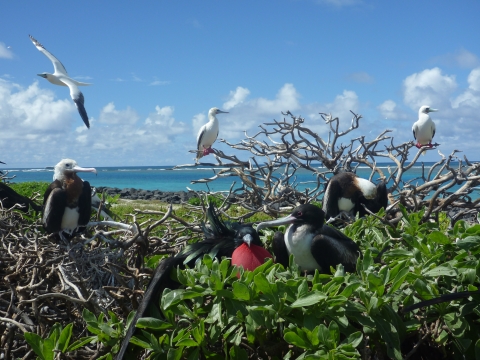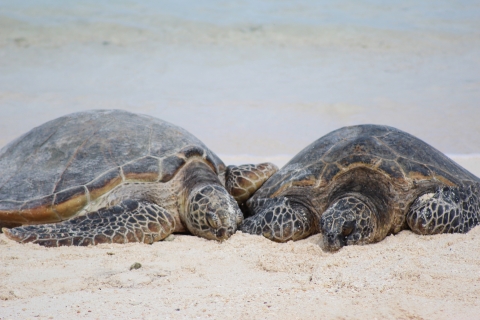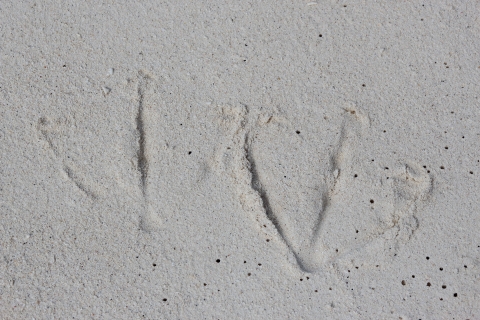This year is the 50th anniversary of the Endangered Species Act, a law that has been a powerful catalyst for conservation of America’s most treasured fish, wildlife, plants and their habitats. In the Pacific Region, our Tribes, state and federal agencies, and partners have joined with our dedicated staff to be the driving force behind the successes we share and the strength ensuring we can address the challenges ahead. Celebrate this milestone with us in this collection of stories as we reflect on past successes, assess current challenges, and envision an equally bright future for the next 50 years and beyond.
President Obama today announced the expansion of the Papahānaumokuākea Marine National Monument to become the world’s largest protected area. More than 582,000 square miles of coral reefs, seamounts and undersea ridges will now be safeguarded, an area greater than the size of Texas, California and Montana combined. The U.S. Fish and Wildlife Service is now responsible for administering or co-administering nearly 1 billion acres of lands and waters for wildlife, more than any other entity on the planet.
The Northwestern Hawaiian Islands were originally protected by President Teddy Roosevelt who established the Hawaiian Islands Bird Reservation in 1909. President Franklin D. Roosevelt broadened the protections to all wildlife and formed the Hawaiian Islands National Wildlife Refuge in 1940. And in 2006 President George W. Bush created Papahānaumokuākea Marine National Monument to protect and preserve the marine waters and their wildlife and historic, cultural and scientific riches. Today’s designation will expand the existing Marine National Monument by 442,781 square miles, bringing the total protected area to 582,578 square miles.
For many years, the Service worked to protect and promote the natural and cultural history of the National Wildlife Refuges that form the backbone of the Monument: Midway Atoll National Wildlife Refuge and Battle of Midway National Memorial and Hawaiian Islands National Wildlife Refuge. As both a national wildlife refuge national wildlife refuge
A national wildlife refuge is typically a contiguous area of land and water managed by the U.S. Fish and Wildlife Service for the conservation and, where appropriate, restoration of fish, wildlife and plant resources and their habitats for the benefit of present and future generations of Americans.
Learn more about national wildlife refuge and part of a marine national monument marine national monument
A marine national monument is an ocean area designated by a presidential proclamation under the Antiquities Act. The U.S. Fish and Wildlife Service partners with the National Oceanic and Atmospheric Administration (NOAA), state and territorial governments and others to manage marine national monuments that conserve the ocean and remote islands and atolls within the National Wildlife Refuge System.
Learn more about marine national monument , these special places have a unique set of protections and opportunities.
Today, the Service manages Papahānaumokuākea with our partners the National Oceanic and Atmospheric Administration, the State of Hawaii and the Office of Hawaiian Affairs. By working together, can provide an even greater impact for species and cultural resources not only at our Refuges, but throughout the entire Northwestern Hawaiian Islands.
The Papahānaumokuākea Marine National Monument, which is part of the most remote island archipelago on Earth, supports a dynamic reef ecosystem with more than 7,000 marine species, of which approximately one quarter is unique to the Hawaiian Islands.
This diverse ecosystem is home to many species of coral, fish, birds, marine mammals and other flora and fauna, including the endangered Hawaiian monk seal, three endangered whale species, and the endangered leatherback and hawksbill sea turtles.
Its biological and geographic isolation, coupled with unique oceanographic and geological conditions, have produced some of the most unique and diverse ecological communities on the planet. Important geological features of the expansion include more than 75 seamounts, as well as a non-volcanic ridge that extends southwest towards the Johnston Atoll. Together, these features form biodiverse hotspots in the open ocean that provide habitat for deep-sea species, include sponges, other invertebrates, fish and colonies of corals many thousands of years old.
In addition, this area has great cultural significance to the Native Hawaiian community, including creation and settlement stories, and a connection to early Polynesian culture and is used to practice important activities like traditional long-distance voyaging and wayfinding.
We invite you to visit the Monument via social media and learn more about the wildlife that call it home, its important role in history and Hawaiian culture, and the conservation and science work being done by the Service and our partners to protect it all for future generations.
###
The U.S. Fish and Wildlife Service works with others to conserve, protect, and enhance fish, wildlife, plants, and their habitats for the continuing benefit of the American people. For more information, visit www.fws.gov/pacificislands, or connect with us through any of these social media channels at https://www.facebook.com/PacificIslandsFWS, www.flickr.com/photos/usfwspacific/, https://medium.com/usfwspacificislands or www.twitter.com/USFWSPacific.













